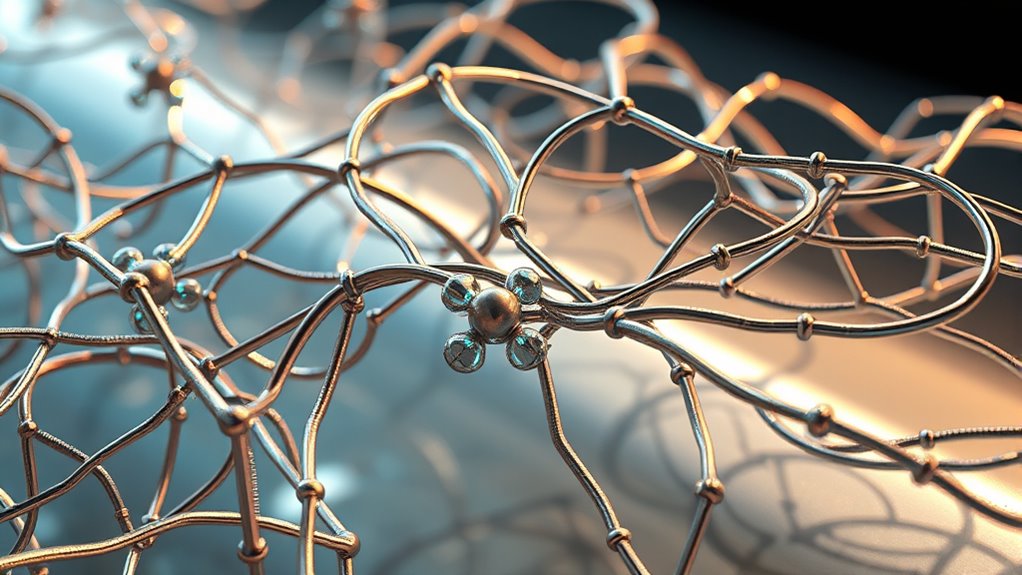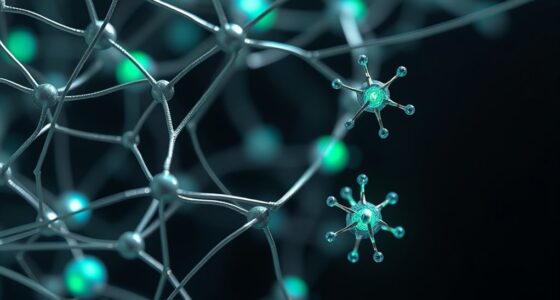Carbon nanotube-based nanomachines use cylindrical carbon structures known for their strength, flexibility, and excellent electrical conductivity. They are crafted through advanced fabrication techniques like chemical vapor deposition and electron beam lithography, allowing precise control over their design. These nanomachines can perform various functions, from medical applications such as targeted drug delivery and biosensing to electronic innovations like flexible devices and improved batteries. Keep exploring to discover how these tiny machines are transforming multiple industries and what future developments hold.
Key Takeaways
- Carbon nanotube nanomachines utilize cylindrical carbon structures with exceptional strength, flexibility, and electrical conductivity for mechanical and electronic functions.
- Fabrication involves controlled chemical vapor deposition and precise patterning techniques to create tailored nanoscale devices.
- Their mechanical properties include high tensile strength, elasticity, and thermal stability, supporting durable, responsive nanomechanical systems.
- Applications span medicine (drug delivery, biosensors, surgical tools) and electronics (high-speed transistors, flexible devices, thermal management).
- The structure’s seamless design and functionalization enable efficient electron transport and integration into diverse nanotechnology applications.
Structural Architecture of Carbon Nanotube Nanomachines
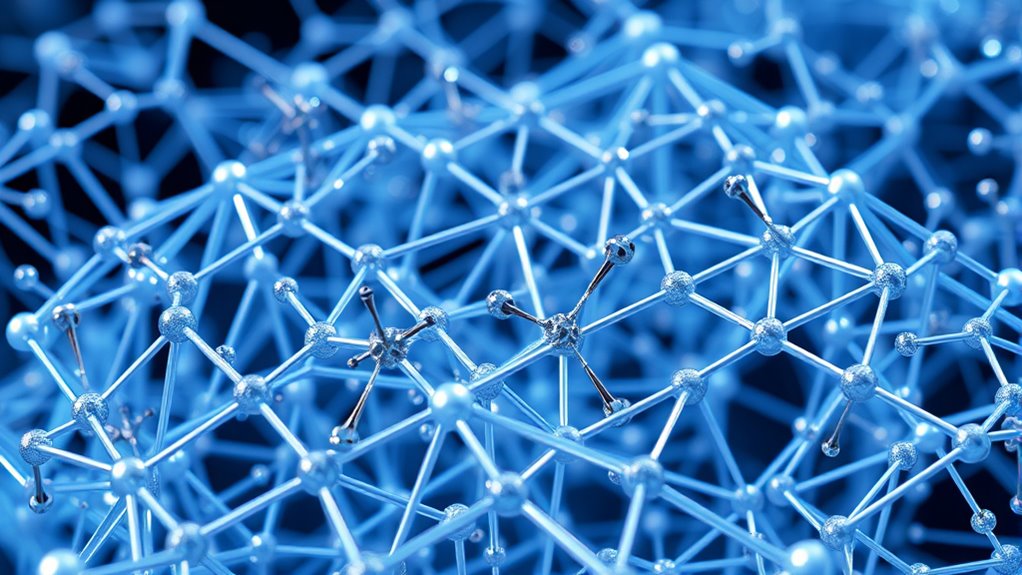
The structural architecture of carbon nanotube nanomachines leverages the unique properties of these cylindrical carbon structures. You’ll find that their high tensile strength, flexibility, and electrical conductivity make them ideal for building nanoscale devices. These nanomachines often feature a core or scaffold made from single-walled or multi-walled nanotubes, providing a sturdy framework. The seamless cylindrical structure allows for efficient electron transport and mechanical resilience, critical for nanomechanical operations. By designing these architectures with precise control over length, diameter, and functionalization, you can create versatile nanodevices capable of performing complex tasks at the molecular level. Additionally, the performance capabilities of these nanotubes enable the development of highly efficient and responsive nanomechanical systems.
Fabrication Techniques and Design Strategies
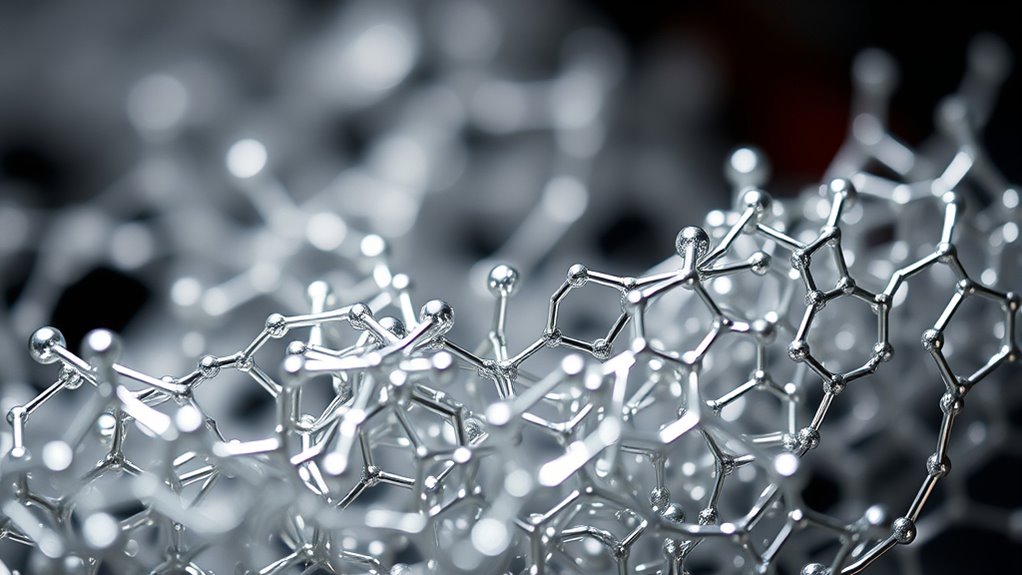
Building effective carbon nanotube nanomachines requires precise fabrication techniques and thoughtful design strategies. To create functional devices, you need methods like chemical vapor deposition (CVD), which allows controlled growth of nanotubes with specific orientations and dimensions. You’ll also utilize techniques such as electron beam lithography and dielectrophoresis for positioning and patterning nanotubes accurately. Design strategies focus on optimizing the nanotube’s structure to enhance performance, like adjusting chirality for electrical properties or creating junctions for switching functions. Ensuring strong interfaces and minimizing defects are critical steps in fabrication. Additionally, understanding the properties of reviews can guide improvements in design and application. By combining these techniques with strategic design, you can develop reliable nanomachines tailored for specific applications, whether in sensing, electronics, or medicine. Precision and careful planning are key to advancing carbon nanotube nanotechnology.
Functional Capabilities and Mechanical Properties

Carbon nanotubes exhibit remarkable functional capabilities that make them ideal for diverse nanomachine applications. Their exceptional strength and elasticity enable them to withstand extreme forces without breaking, providing durability in tiny mechanical systems. You’ll find their high tensile strength surpasses many materials, allowing for reliable, long-lasting components. Their flexibility allows for dynamic movements, essential for nanoscale actuators and switches. Additionally, nanotubes have excellent electrical conductivity, enabling seamless integration of mechanical and electronic functions within nanomachines. Their thermal stability ensures consistent performance across a range of temperatures. Moreover, their manufacturing techniques have advanced significantly, facilitating large-scale production of consistent and high-quality nanotubes. These properties combine to create versatile building blocks for nanorobotics, sensors, and other devices, where mechanical resilience and functional adaptability are vital. By leveraging these capabilities, you can design more efficient, robust nanomachines suited for complex tasks.
Applications in Medicine and Healthcare

Thanks to their exceptional strength, flexibility, and electrical conductivity, carbon nanotubes are opening new frontiers in medicine and healthcare. You can use them for targeted drug delivery, where nanomachines attach to specific cells or pathogens, releasing medication precisely where needed. Their conductivity also makes them suitable for biosensors that detect diseases early, providing rapid and accurate diagnostics. Additionally, carbon nanotubes enable the development of minimally invasive surgical tools that navigate complex tissues with high precision. They can also support tissue engineering by creating scaffolds that promote cell growth and regeneration. Incorporating biodiversity considerations in the development of these nanotechnologies can enhance their safety and sustainability. As a result, you benefit from faster healing, improved diagnostics, and personalized treatments. These applications demonstrate how nanotube-based nanomachines are transforming healthcare, making treatments more effective and less invasive.
Innovations in Electronics and Material Science
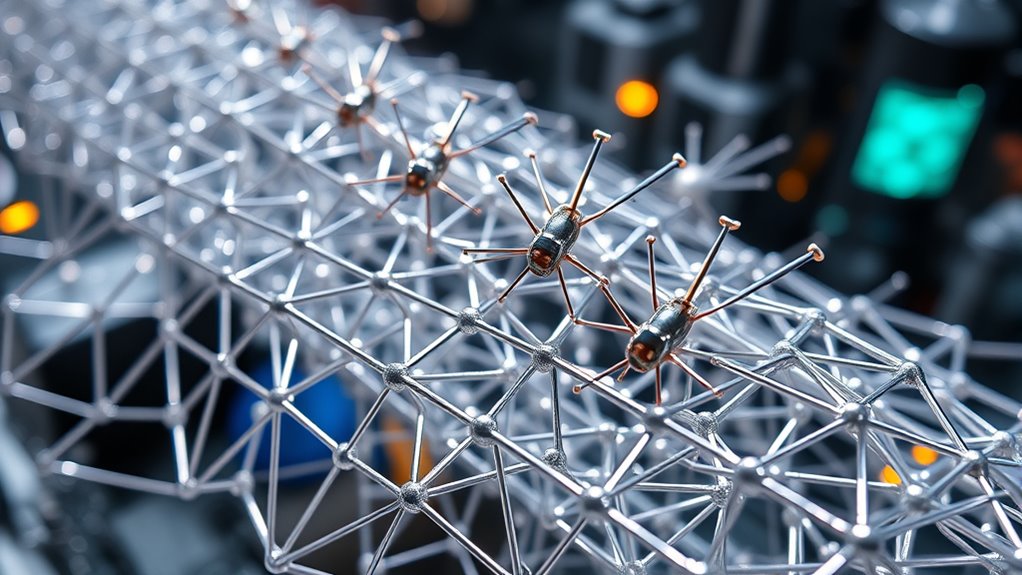
Innovations in electronics and material science have been revolutionized by the unique properties of carbon nanotubes, which enable the development of faster, smaller, and more efficient devices. Their exceptional electrical conductivity allows you to create high-performance transistors and ultra-sensitive sensors. The remarkable strength and flexibility of nanotubes lead to lightweight, durable materials for flexible electronics and wearable tech. You can now develop conductive composites that improve battery performance and enable rapid charge-discharge cycles. Their thermal conductivity helps manage heat in miniaturized components, preventing overheating. Additionally, carbon nanotubes facilitate the miniaturization of electronic components, pushing the boundaries of Moore’s Law. These advancements open new possibilities for smarter gadgets, sustainable energy solutions, and advanced communication systems, transforming how you design and innovate in electronics and material science. Hosting discounts and VPS hosting coupons can support startups and researchers working in this cutting-edge field.
Frequently Asked Questions
How Do Environmental Factors Influence Carbon Nanotube Nanomachine Performance?
Environmental factors like temperature, humidity, and chemical exposure directly impact your carbon nanotube nanomachine’s performance. Elevated temperatures can cause expansion or degradation, reducing efficiency. Humidity and chemicals may lead to corrosion or contamination, impairing function. To guarantee ideal operation, you need to control environmental conditions, protect the nanomachines from harsh elements, and consider these factors during design and deployment. This way, you maintain reliability and longevity in various settings.
What Are the Ethical Considerations in Deploying Nanotube Nanomachines?
You should consider the ethical implications of deploying nanotube nanomachines, such as potential environmental impacts, health risks, and privacy concerns. Guarantee transparency with stakeholders and adhere to regulations to prevent misuse or unintended harm. You must also address issues of consent and equitable access, making sure that the technology benefits society without exacerbating inequalities or causing harm. Responsible development and application are essential to ethically deploy these advanced devices.
Can Nanotube Nanomachines Self-Repair or Adapt Over Time?
Sure, nanotube nanomachines can self-repair and adapt, but don’t hold your breath expecting a sci-fi miracle. They’re designed with some resilience, allowing minor repairs or adjustments, but complex self-healing is still a dream. You might think they’d learn new tricks overnight, but for now, they mostly stick to their original programming. So, while impressive, don’t expect them to become autonomous, ever-changing marvels just yet.
What Are the Challenges in Mass-Producing These Nanomachines Reliably?
You face significant challenges in reliably mass-producing carbon nanotube-based nanomachines. Variability in nanotube quality, difficulty controlling their precise placement, and scaling up manufacturing processes pose major hurdles. Additionally, ensuring consistent functionality and integration at large scales remains complex. You need advanced techniques for uniform synthesis, precise assembly, and quality control to overcome these obstacles and achieve reliable mass production.
How Do Nanotube Nanomachines Compare to Biological Counterparts in Efficiency?
You might think comparing nanotube nanomachines to biological ones is a tall order, but they each excel in their own right. Nanotube machines can be designed for specific tasks with remarkable strength and durability, often surpassing biological counterparts in harsh environments. However, biological systems are highly efficient at energy use and self-repair. Overall, nanotube nanomachines are promising, but they still have a way to go to match nature’s finesse.
Conclusion
You see, carbon nanotube nanomachines blend incredible strength with delicate precision. They’re like tiny giants—powerful yet versatile—transforming medicine and electronics alike. While their robustness promises durability, their nanoscale size offers unmatched flexibility. It’s this contrast that makes them so revolutionary: strength meets agility, innovation meets practicality. As you explore their future, remember it’s this unique juxtaposition that will enable breakthroughs once thought impossible, opening doors to endless technological possibilities.
